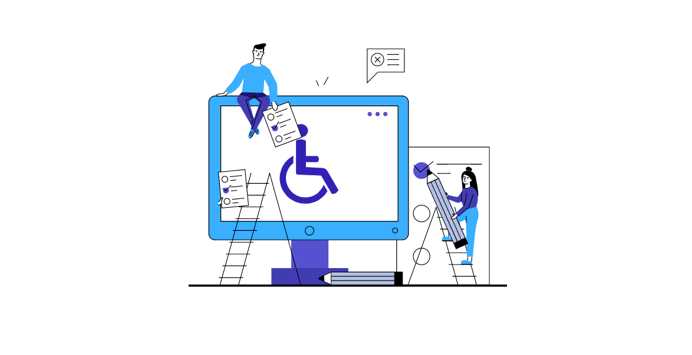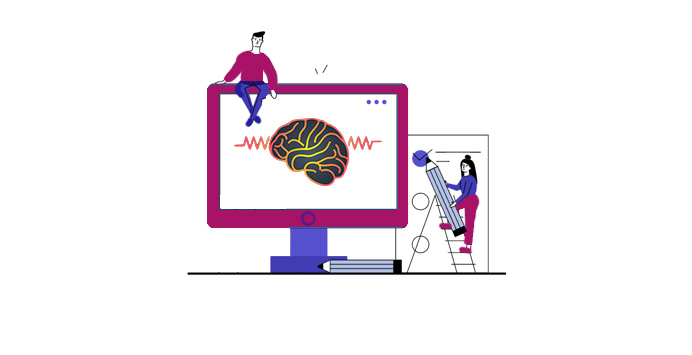
Web Accessibility is a sensitive subject these days as numerous site owners fail to comply with the enforced guidelines. The guidelines and regulations are updated each year to provide better assistance for users with disabilities. Therefore, the Americans with Disabilities Act serves a great purpose towards making the web equally accessible. However, not all website owners conform to these regulations. On the other hand, website owners are often confused with the exact steps to take to ensure and check compliance with the ADA guidelines.
Checking your website for ADA compliance can be a lasting process, but it’s possible either way. Moreover, there are automated checker solutions besides the manual checking options that website owners can rely on. In that light, let’s move on and further describe the methods that site owners can use to check ADA compliance.
Get familiar with the ADA compliance in-house
Before getting into more details about the ADA compliance checking methods, website owners should get to know about the guidelines. A great part of the job can be done in-house with your team of experts by getting familiar with the regulations.
Site owners will soon realize that there are no exact rules listed in ADA regarding the accessibility of websites. However, this section of the ADA relies on the WCAG 2.0 guidelines proposed by the W3C.
Furthermore, the AA level of compliance is required, making the guidelines more effective and more difficult to comply with. This level represents the middle level of the WCAG guidelines since the A level is the lowest and AAA is the highest. Nevertheless, the AA level includes guidelines that would make most users with disabilities use the site equally.
Once the website owner is fully informed of the meaning of the ADA guidelines, the next step is to check the site for compliance.
Conduct a manual website check
It’s rather surprising how much progress can website owners make in the mission to check the ADA compliance manually. Of course, it takes a well-developed course of action and knowing at least some ADA ground rules.
Therefore, the best way to conduct a manual ADA compliance check is to work with your team in-house. A detailed plan of the audit should be prepared before starting the check. This way, website owners can make sure that all the crucial items are covered by working with a logical course of action.
Check if your site is perceivable according to ADA
Making your website equally perceivable for all users is perhaps the most important aspect of ADA compliance. Of course, the other aspects are crucial as well, but the key to ensuring web accessibility is to make the site information reach all users. On the other hand, it’s important that people with disabilities can perceive different types of site content.
Here’s a list of steps that website owners can manually take to check if the site is perceivable:
- Check if images and links are provided in a meaningful and simple order
- Make sure that the site includes alternative text for images
- Scan the site’s videos for clear playing options
- Ensure that the content is organized in a meaningful way
- Check if the video content on the site comes with captions and transcripts
- Check if the site’s content organization differentiates foreground and background
- Ensure the accordant color contrast ratio
In essence, by providing a thorough check if the web page content is distinguishable, website owners can ensure ADA compliance.
Besides the mentioned steps to take, website owners should also check if the content is adaptable. This means that the web page content can be presented in more ways than one without structural changes. Alternatives also fit in the group of perceivable factors, but more on that in a bit.
Scan your website for accessibility alternatives
To fully-check your website for ADA compliance, it’s crucial to conduct a check on alternatives. The web accessibility guidelines include the usage of several types of alternatives.
First off, website owners should check for screen readers. These tools help those with visual disabilities to still get the information from video content. These tools work together with alternative text and captions and convert the text into speech. The ARIA landmarks are also considered as alternatives that help the disabled navigate the site.
Another type of accessibility alternative that website owners should check for is braille. It also serves as a text alternative and should be included according to level AA guidelines.
Conduct an operability audit
Making sure that the site is operable for people with disabilities adds up to through manual check of the ADA compliance.
Website owners should put special attention to the following steps:
- Check if your website includes full keyboard operability
- Make sure that the order of actions on the site is logical
- Check the access to the main navigation menu
- Ensure that the disabled can easily access the options to start, stop, pause or scroll the content
- Make sure that all codes are fully correct to avoid confusion
- Check if the site includes options to showcase the errors to users
- Further instructions to avoid the errors should be included as well
Additionally, website owners should manually check for labels and instruction boxes. These items can significantly improve the operability for the disabled and are therefore ADA compliant.
Make sure that the site content is understandable according to ADA
The logical order of content on the website page can greatly affect the ADA compliance of the site. Because of this, site owners should manually check the understandable aspects of the compliance.
To do so, the first step is to make sure that the site includes meaningful headings, paragraphs, and structural items. Moreover, site owners should check the content for any unwanted jargon, abbreviations, and similar text types.
The layout of the page should be presented in a meaningful manner, with the page number designated. On the other hand, links should be marked with the appropriate anchor text.
Website owners should also check for the number of options that visitors can access the site destinations. According to the ADA, visitors must access the destination pages in at least 2 ways.
Check if the site is equally usable by all visitors
One of the most important aspects of web accessibility is equity in site services provided to all users. Website owners should therefore pay additional attention to these factors while manually checking.
First off, while checking for this aspect of the website, owners should make sure that there’s no keyboard trap on the site.
If the site is ADA compliant, this option will not be included. The reason for this is that web-accessible sites should offer equal keyboard operability for everyone.
Moreover, the program code is also important because of the potential incomplete lines. Incomplete code lines can result in the inability of some users to equally navigate the site.
On the other hand, assistive technologies and their use may also be prevented because of bad code lines.
Run an automated check for ADA compliance
Although the manual check could even result in complete compliance with ADA standards, it’s not necessarily so. Some websites that are fragile in ADA compliance on higher levels require automated solutions and program checkers.
If you are using platforms like WordPress, there might be an easy solution for ADA compliance. Namely, such platforms offer accessibility plugins as automated solutions.
Not only do these tools scan the site for ADA compliance, but they also present solutions to the website owners. Another platform that enables the use of such accessibility plugins is Shopify. This platform offers tools, solutions, and even a full kit of accessibility tools for ADA compliance.
All the online plugins and checkers may also come with a price, so website owners should be informed before selecting the best option. Still, professional accessibility checkers are perhaps the best way to cope with the ADA compliance difficulties.
One of such renowned solutions is the UserWay Accessibility Scanner Tool. Website owners that fail to achieve full ADA compliance via manual checks can make use of this tool.
By using the UserWay tool or other accessibility tools, website owners will be able to run a full site scan. The accessibility score of the site can also be displayed, while the tool includes a selective option for accessibility standards. This way, website owners can check the ADA compliance box and run a specific check on the site. It’s possibly the best way to be sure of the full ADA compliance and other tools like AccessiBe are also effective.
Conclusion
We’ve now come a long way to describe the methods of checking for ADA compliance of a website. Hopefully, the methods listed will help each website owner check for the level of ADA conformance. However, the combination of all the methods listed above may result in the best overall accessibility score of the site. It takes mutual effort for the site’s business team and special tools to ensure conformance. By using both techniques, website owners can make sure that no legal issues will be caused because of insufficient ADA compliance. On the other hand, it could also boost the reputation of the site and result in more visitors. Ultimately, the manual check and automated tools are unprecedented among the methods of checking the website for ADA conformance.










